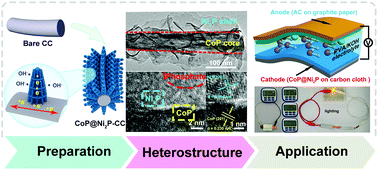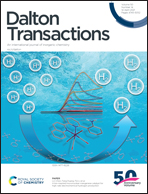Phosphate-modified Co–Ni phosphide heterostructure formed by interfacial and electronic tuning for boosted faradaic properties†
Abstract
Rational structural and compositional modulation endows electrode materials with unique physicochemical characteristics due to their adjustable electronic properties. Herein, a phosphate-modified hierarchical nanoarray consisting of a heterojunction with a well-aligned cobalt phosphide nanowire core and nickel phosphide nanosheet shell on flexible carbon cloth (denoted as CoP@Ni2P-CC) is engineered. The phosphate-modulated heterogeneous phosphide with a tuned electronic structure, additional heterojunction interfaces, and high degree of covalency in the chemical bonds accelerates the reaction kinetics and enhances the energy storage performance. Due to these reasons, the as-obtained phosphide-based heterostructured CoP@Ni2P-CC electrode delivers a capacity of 475.9 C g−1 at 0.5 A g−1 with a satisfying rate capability, which is greatly superior to that of its transition metal counterparts (sulfide, selenide, and oxide). After being assembled into a flexible hybrid supercapacitor (FHSC), a wide operating voltage (1.8 V), high energy/power densities (49.8 W h kg−1/8.6 kW kg−1), and long-term stability (85.1% capacity retention after 10 000 cycles) were achieved. This work may provide a general method from multiple strategies for designing reliable pseudocapacitive materials for flexible electronics.



 Please wait while we load your content...
Please wait while we load your content...